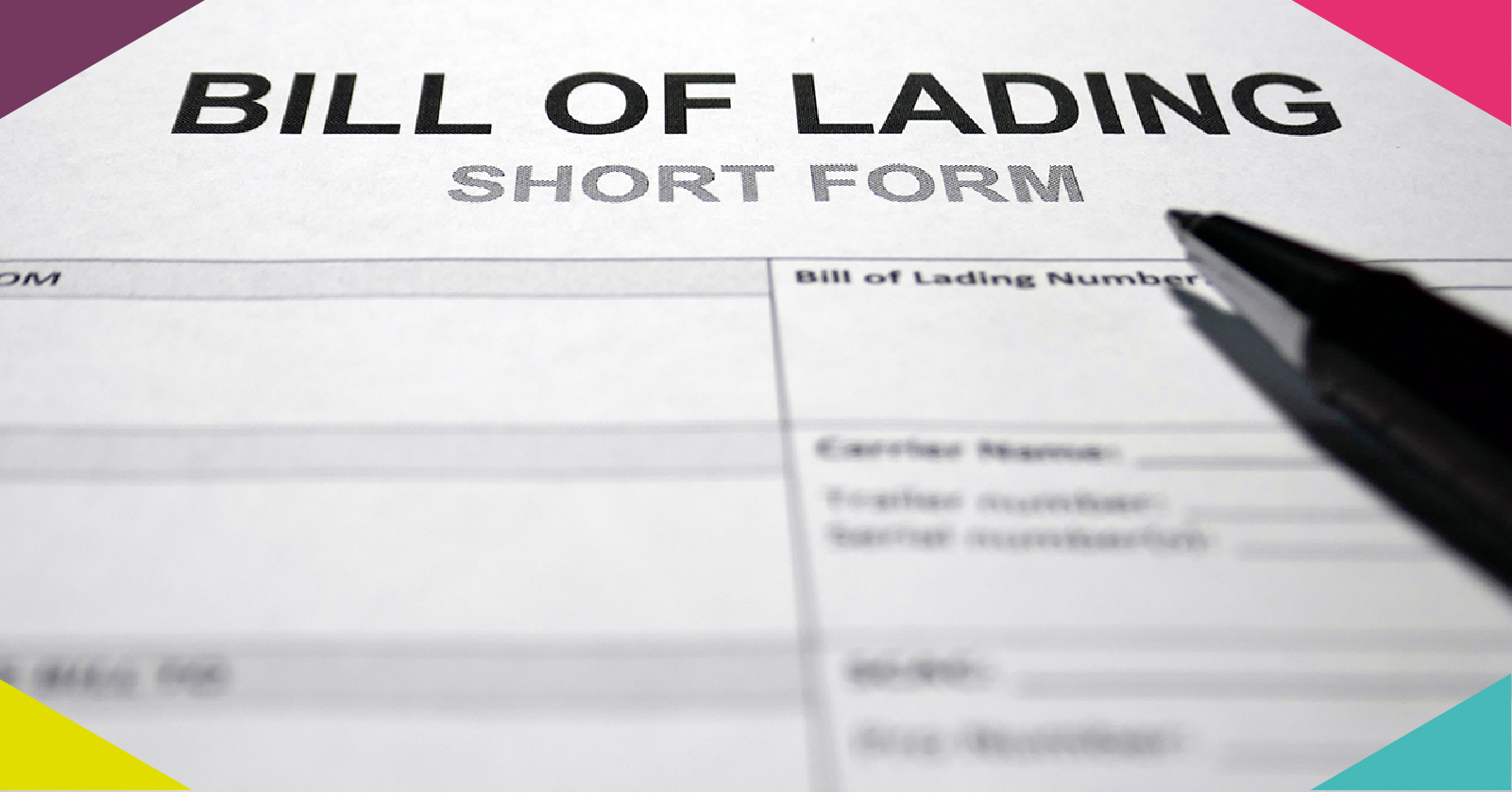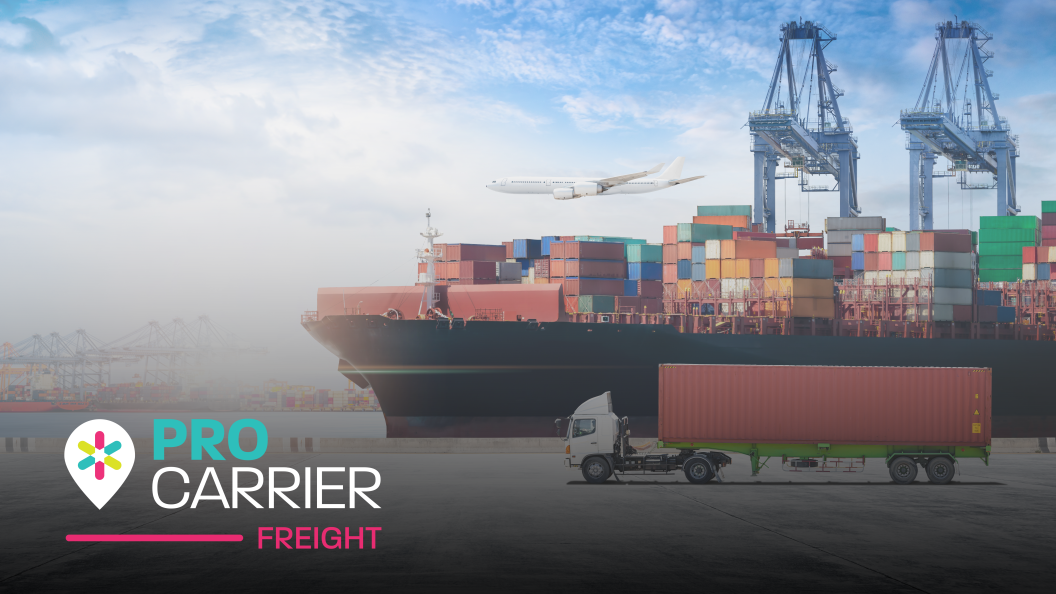Table of contents
- What is a Bill of Lading [Meaning] and Why Would You Need it?
- Bill of Lading Meaning
- What is the Purpose for a Bill of Lading (BOL)?
- How Does the Bill of Lading Act as a Receipt?
- What is a Title of Goods?
- How Does the Bill of Lading Act as Evidence of a Contract?
- What Information Does the Bill of Lading Contain?
- Why is the Bill of Lading so Important?
- What are the Different Types of Bill of Lading?
- The Importance of Telex/Express Releases
- How do You Get the Bill of Lading?
- What to do if You Lose the Bill of Lading?
What is a Bill of Lading [Meaning] and Why Would You Need it?
In this article, we’ll take a deep dive into understanding what a Bill of lading is, what a lading is not, give you a comprehensive definition and explain how this documentation helps freight forwarders serve their customers. When importing or exporting goods by sea freight, you, the sender will need a Bill of Lading. Here is everything you need to know about this necessary legal document when you’re shipping goods overseas.
Bill of Lading Meaning
In simple terms, a Bill of Lading is a legal document issued by the carrier to the shipper when shipping goods internationally, and it is an essential element of the process. It is delivered to the shipper by the carrier after the cargo have been placed into the (sea freight) vessel, and it ensures that the shipper retains title.
In order to transfer ownership the Bill of Lading will be given to the consignee or buyer upon arrival and delivery of the goods.
This process allows the shipper to release the goods form their care. It must be noted that the Bill of Lading is not a contract but rather demonstrates to the shipper and carrier the presence of a contract.
It is possible there could be one or multiple Bills of Lading for one shipment, depending on whether you are using one mode of transport or multimodal transport for different legs of the shipment’s journey.
What is the Purpose for a Bill of Lading (BOL)?
The Bill of Lading serves several purposes:
- Acts as a receipt
- Acts as a title of goods which represents ownership of the goods
- Provides evidence of the contractually agreed terms and conditions
- Key information such as the names and addresses of the shipper (consigner) and receiver (consignee), shipment date, quantity, exact weight, value, and freight classification are all detailed
- Comprehensive descriptions as to whether the items are hazardous are detailed
- Specific instructions about how to handle the goods
- When a Bill of Lading is issued, it will be assigned with a unique number by the carrier. This reference number can then be used to track the shipment status if necessary
- It is important in the letter of credit process
How Does the Bill of Lading Act as a Receipt?
A Bill of Lading assures both parties that the goods have been loaded on to the vessel taking it to its destination port. Any reputable freight forwarder should have oversight of this documentation at any time.
As previously discussed, sometimes there will be multiple Bills which are passed along to different parties involved through separate legs of the journey. Working in this capacity ensures that the control of the cargo is passed on from one party to another and thus the responsibility.
What is a Title of Goods?
A Title of Goods simply represents ownership of the goods at hand.
With every shipment there are always two parties, the shipper and the buyer, the receiving party.
The Bill of Lading will almost always include the buyer’s details and until the goods have been delivered and the original Bill of Lading has been given to the buyer, ownership of the goods still resides with the shipper.
Once the original BOL has been passed over the buyer then has ownership of the goods transferred over to them. It is important to note that sometimes the buyer will receive a copy of the Bill of Lading to act as proof that the goods have been shipped.
However, only the original Bill of Lading has the power to transfer and hold ownership, and can only do so after full payment for the goods. Your freight forwarder should be able to advise in more detail, if needed.
How Does the Bill of Lading Act as Evidence of a Contract?
Any Bill of Lading will be information heavy and contain a variety of details about the goods being shipped from the type of shipment to the quantity of the goods. As stated earlier the Bill of Lading is not a contract but a document that evidences that a contract has been drawn up and signed.
What Information Does the Bill of Lading Contain?
The Bill of Lading contains highly detailed information about the shipment including:
- Details regarding the shipper and buyer
- Details regarding the carrier as well as their signed receipt
- Date that the goods were loaded
- The Port of Origin and Destination Port
- Overall condition of the goods
- Details surrounding the goods e.g. weight, size, dimensions and what it is
- The NMFC Freight Class
- The terms and conditions of the shipment, accompanied by any specialist requirements
Why is the Bill of Lading so Important?
The Bill of Lading is crucial in the shipment process, as a shipment cannot be transported without one.
The Bill of Lading contains information and details about the shipment that are necessary for every party involved, as well as providing proof of the original contract. The Bill also means that whoever is in possession of it assumes ownership of the goods until they have been delivered to the buyer and have transferred ownership to end the shipment process.
The details in the Bill of Lading assure the carrier or multiple carriers depending on your shipment, that the goods contained in the shipment are correct, so that they can be processed to the next stage of the journey.
There is always the possibility that the Bill of Lading can be withheld by the shipper or the carrier if payment has not been made in full. If the shipment has not been delivered correctly, on time or damaged, then the buyer has the right to refuse the Bill of Lading, therefore refusing ownership of the goods.
If cargo is damaged, lost, or stolen you will need to make a claim through your insurance. It is necessary that you have your Bill of Lading as this will need to be submitted to your insurance provider in order to make a claim.
What are the Different Types of Bill of Lading?
Obtaining a Bill of Lading can become a highly complicated process when it’s unclear as to which type of Bill is right for you.
Using a reputable and experienced freight forwarder will more than likely relieve you of this stress, as they will be able to advise you on the correct form of Bill and, on occasion manage this part of the process for you.
The variety and wide range of different types of Bill of Lading can be overwhelming, each with their own properties and requirements, which can make the process challenging.
BRIEF DEFINITIONS INCLUDE:
- Through Bill of Lading: This Bill includes two other types of Bill called an Inland Bill of lading and an Ocean Bill of Lading which depend on the final destination of the shipment. This Bill allows the carrier to use multiple modes of transport or distribution centres when passing the cargo through each.
- Container Bill of Lading: Provides details about goods that are transported from one port to another within containers.
- Clean Bill of Lading: Assures that the goods were not subject to any damage or loss during transit.
- Clause Bill of Lading: Issued when goods are damaged or lost.
- Received Bill of Lading: The carrier issues this document to act as proof of receipt before the goods have been fully loaded on to the vessel.
- Charter Party Bill of Lading: The vessel charterer will issue this document to the shipper to act as an agreement between the owner of the vessel and the charterer.
- House Bill of Lading: also known as a freight forwarder’s Bill of Lading, this document is issued by an Ocean Transport Intermediary freight forwarder to the suppliers upon arrival of the cargo. It acts as receipt that the goods have been shipped.
- Master Bill of Lading: Acts as a receipt of transfer, containing details on the shipper, buyer and possessor of the goods and the terms and conditions of the cargo. This is issued to shippers from carriers.
- Short-term Bill of Lading: Known as a Blank Back Bill, it is issued when the terms and conditions are not specified anywhere on the Bill of Lading.
- Stale Bill of Lading: Used in negotiations after 21 days have passed the date of shipment or any other date agreed upon in the contract.
- Multimodal/Combined Transport Document: Issued when more than one modes of transport are being used in different legs of the shipping process from air, sea, rail, and road.
- Straight Bill of Lading: Also known as a non-negotiable Bill of Lading and is consigned to one individual. It cannot be negotiated aside from the agreed upon equities.
- Bearer Bill of Lading: Defined as the shipment that shall be delivered to the one holding the bill. This means that negotiation is as easy as physically transferring the bill to someone else.
- Order Bill of Lading: This Bill holds the words that allow the Bill to be negotiated by the consignee to make changes to the delivery.
- Express Release/Telex Bill of Lading: Allows the buyer to arrange the cargo to be cleared through Customs for collection.
- Switch Bill of Lading: Essentially the same as a normal bill of lading in format and purpose, however, it is used to replace an original bill of lading when one of the following things happens:
- The port of discharge has changed
- The goods were originally shipped with multiple bills and the consignee wants to use only one bill, or vice versa
- The supplier’s identity is to be kept from the buyer so that they cannot be approached in the future
The Importance of Telex/Express Releases
The shipping and logistics industry is moving into the digital age with the Telex Release one of leading examples of this. It is essentially an electronic copy of the bill of lading that allows the cargo to be arranged to go through Customs ready to be collected. There are both advantages and drawbacks to the use of Telex releases, however it is a popular and easier alternative to the older paper process.
WHAT ARE THE ADVANTAGES?
- Electronic bills can be sent anywhere instantaneously, meaning the whole process is faster. The same goes for making alterations to the bill as they can be made more efficiently. This all allows for a faster release of the goods to the consignee.
- The ability to send a telex release via email for example, eliminates the printing process as well as the need to transport paper bills, saving costs.
- This adds to the increasingly paper free age that we live in, reducing emissions, saving paper waste, and being generally better for the environment.
WHAT ARE THE DISADVANTAGES?
- Not all forwarders or agents have digitised their process yet meaning that the industry is not fully adapted to paperless processes.
- Paper bills allow for easier negotiations which is not always applicable to digital bills.
Another thing to be noted is that while paper bills are more susceptible to forgery, electronic bills are harder to replicate if done correctly. On the other hand it could be argued that with the rise of hackers and counterfeiters increased cyber security is necessary to protect digital bills from being intercepted or altered.
How do You Get the Bill of Lading?
In short, the Carrier is usually the only party who can issue a Bill of Lading to the shipper.
Cargo agents, freight forwarders, and NVOCCs (Non Vessel Owning Common Carriers) can all issue a bill of lading to the shipper. A lot of forwarders will create their own forms with varying layouts and designs, however, the information that needs to be included will remain the same across each carrier’s design.
What to do if You Lose the Bill of Lading?
This can prove to be an important issue as misplacing your Bill of Lading may result in you not being able to collect your goods. There is also the likelihood you may incur additional holding fees or other surcharges such as demurrage fees.
Good practice is to contact the company which have misplaced the cargo as soon as possible and enquire as to its whereabouts and whether they are able to find it. Best practice would also be to notify your freight forwarder that the Bill cannot be located. Sometimes the Bill of Lading may not be needed if it is not the fault of the courier, as other documents such as long-term bank guarantees can be enough to secure the release of the goods. However, be prepared for the possibility to pay an additional fee for this.
It is a good idea to prepare the below documents in the event the Bill of Lading cannot be located:
- Packing list
- A written statement confirming the loss of the Bill of Lading
- A copy of your letter of credit, assuming the payment had been made using a letter of credit
- Cargo commercial invoice
- The approval of the shipper as well as a letter of indemnity provided by the shipper and another form the receiving party
- Bank guarantees
- A formal request of release
If you are you looking for a partnership that focuses on quality rather than quantity? Talk to someone direct.
Contact us to start the conversation.



